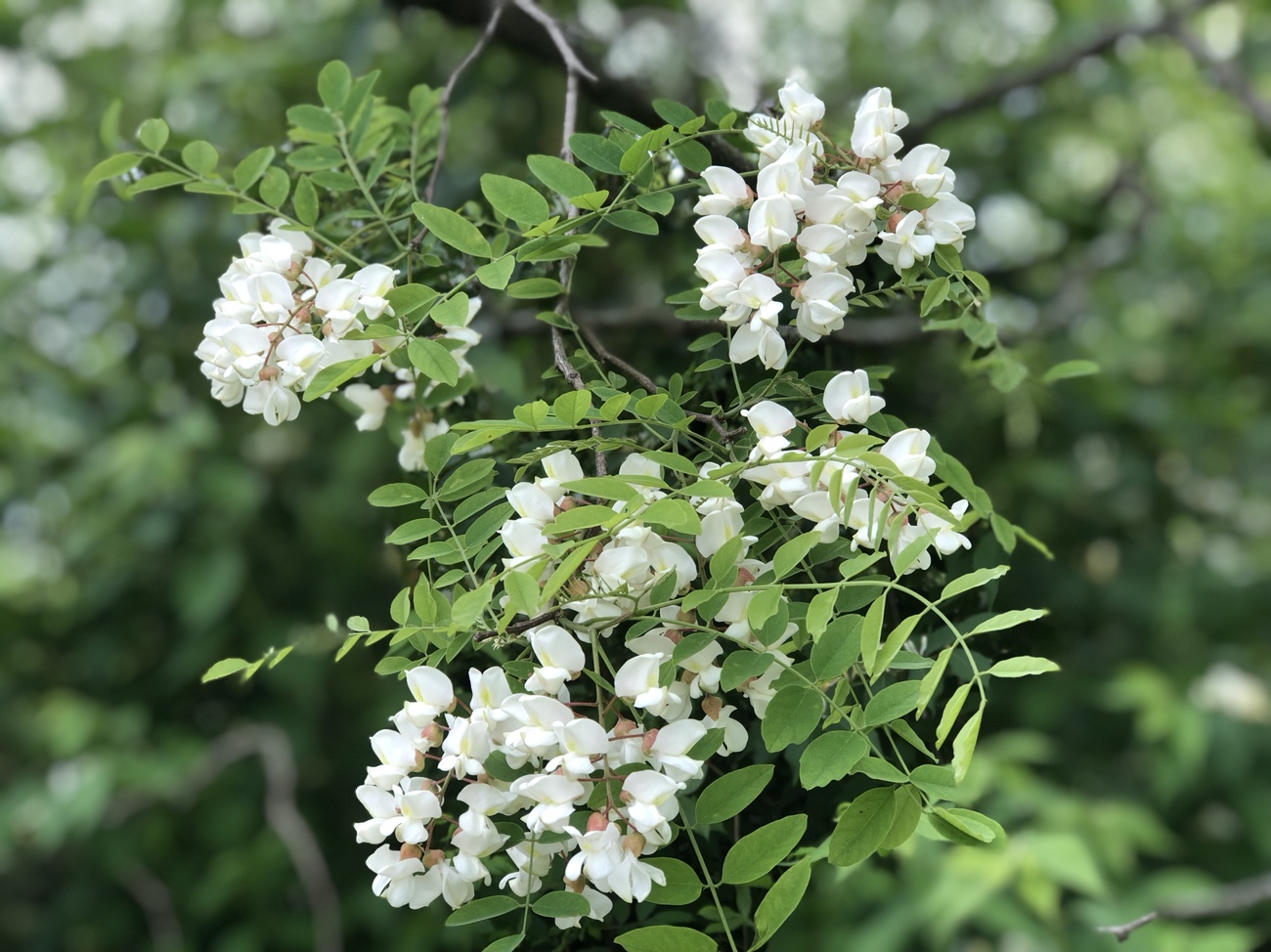
On hot May nights, an enchanting perfume wafts through the still air. What is this alluring fragrance? The sweet scent comes from the creamy blooms of the Black Locust tree. When an edible flower smells that lovely, it surely must make a sensational wine!
These special blossoms are only around for about two weeks. It’s usually their perfume that beckons the forager to discover the source of that incredibly delicious scent. Think honeysuckle smells great? It does, but Black Locust takes it to a whole new level.
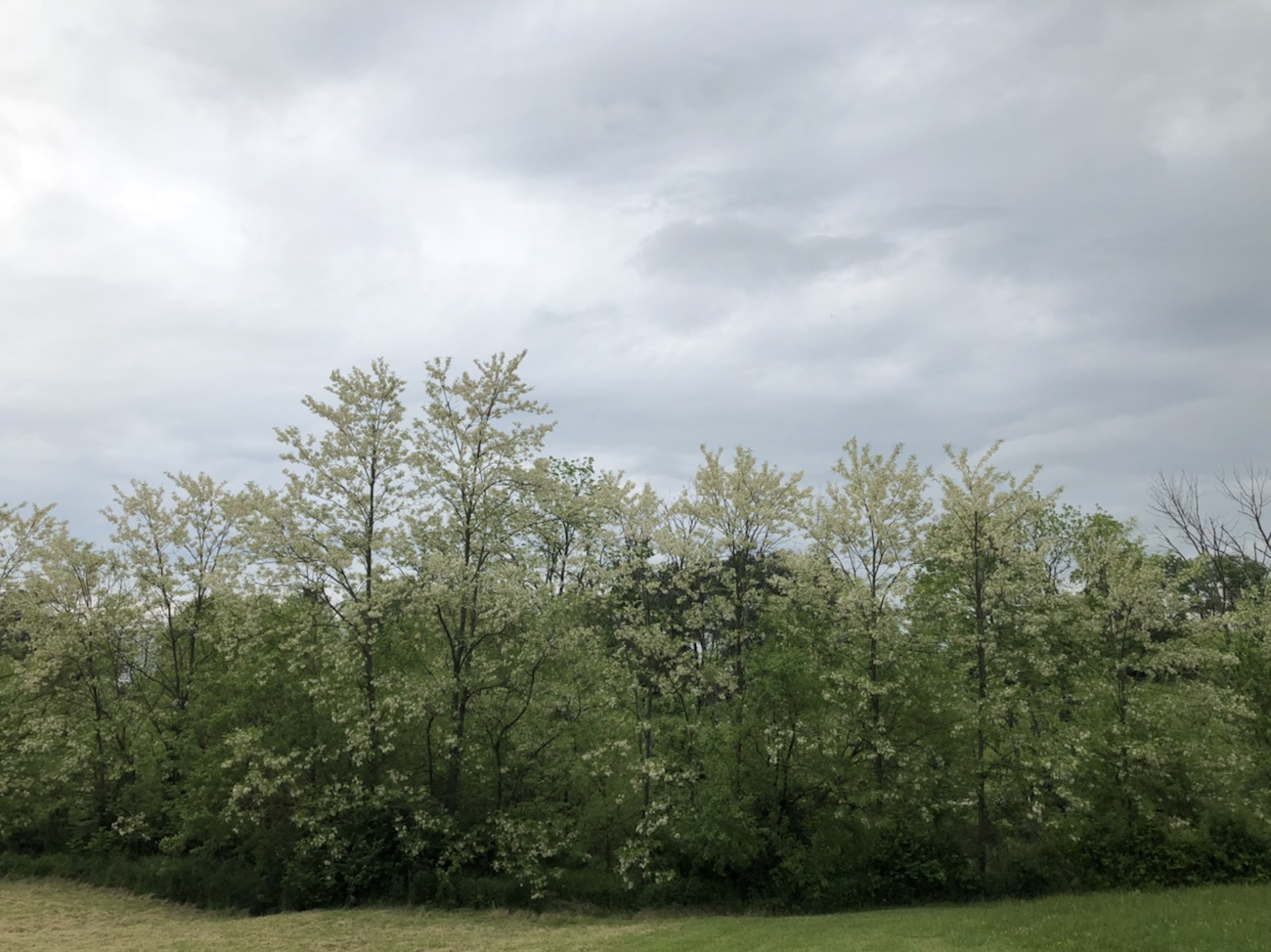
Making the wine starts with gathering lots of the flowers. It’s been a great year for the Black Locusts – more trees blooming than last year, and plenty to make wine and still leave lots for the pollinators. We picked what came to 4 gallons of flowers after removing the stems. It was short work and very easy picking from the lower branches.
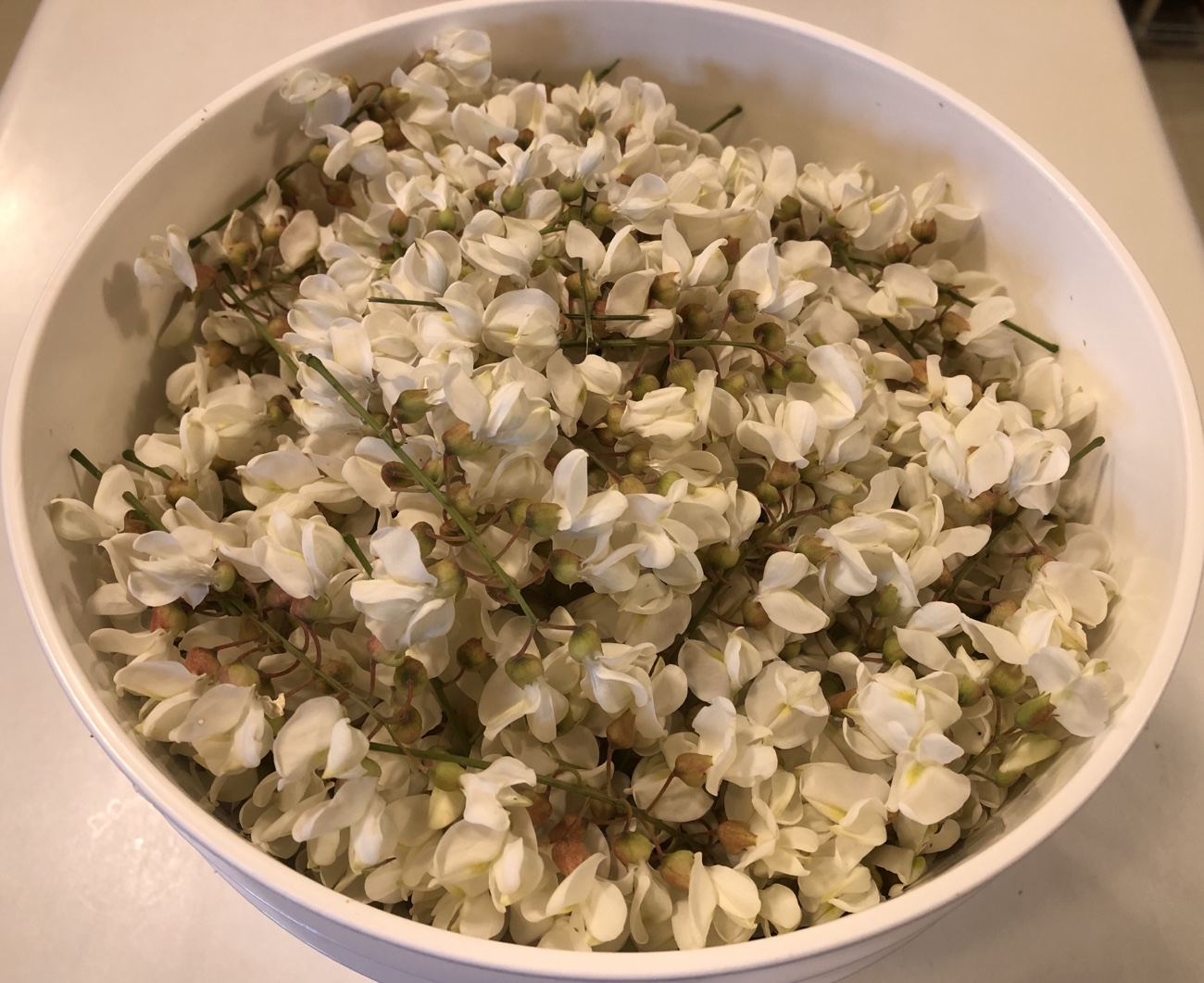
Once the flowers have been plucked, they need to be removed from the stem – and this, too, is super easy (unlike elderflowers or honeysuckle!). I grasped the cluster of flowers from the base of the stem, pointed it down (into the bowl), and stripped the flowers off in one motion. It took me a while to de-stem all those blooms!
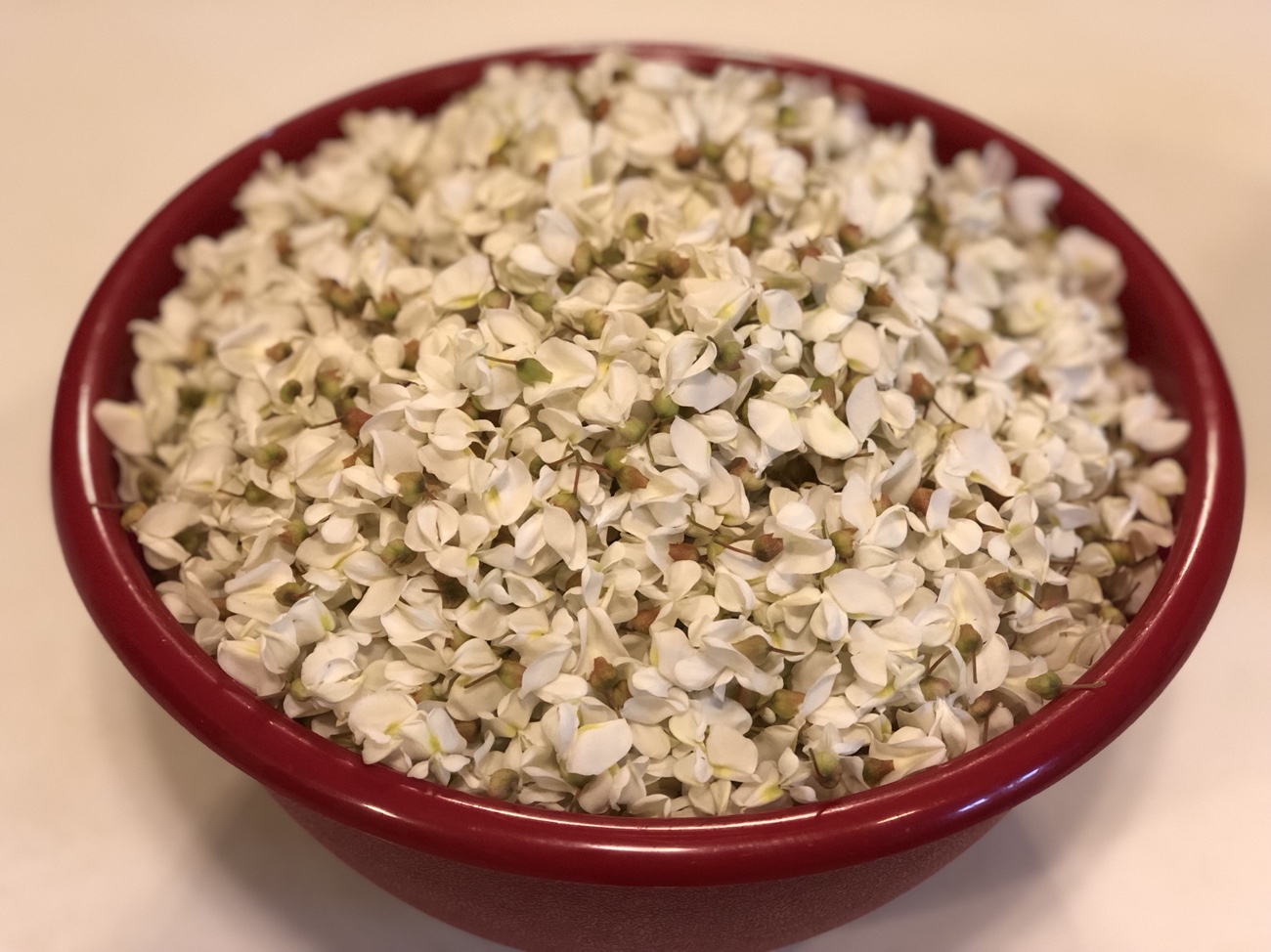
The recipe I used says to wash the flowers, but I ignored that bit because I didn’t want to risk washing away some of that scent. We don’t use chemicals here, so that’s not a concern, and I shook out all the bugs I could and relocated them. And, yes, there were spiders!
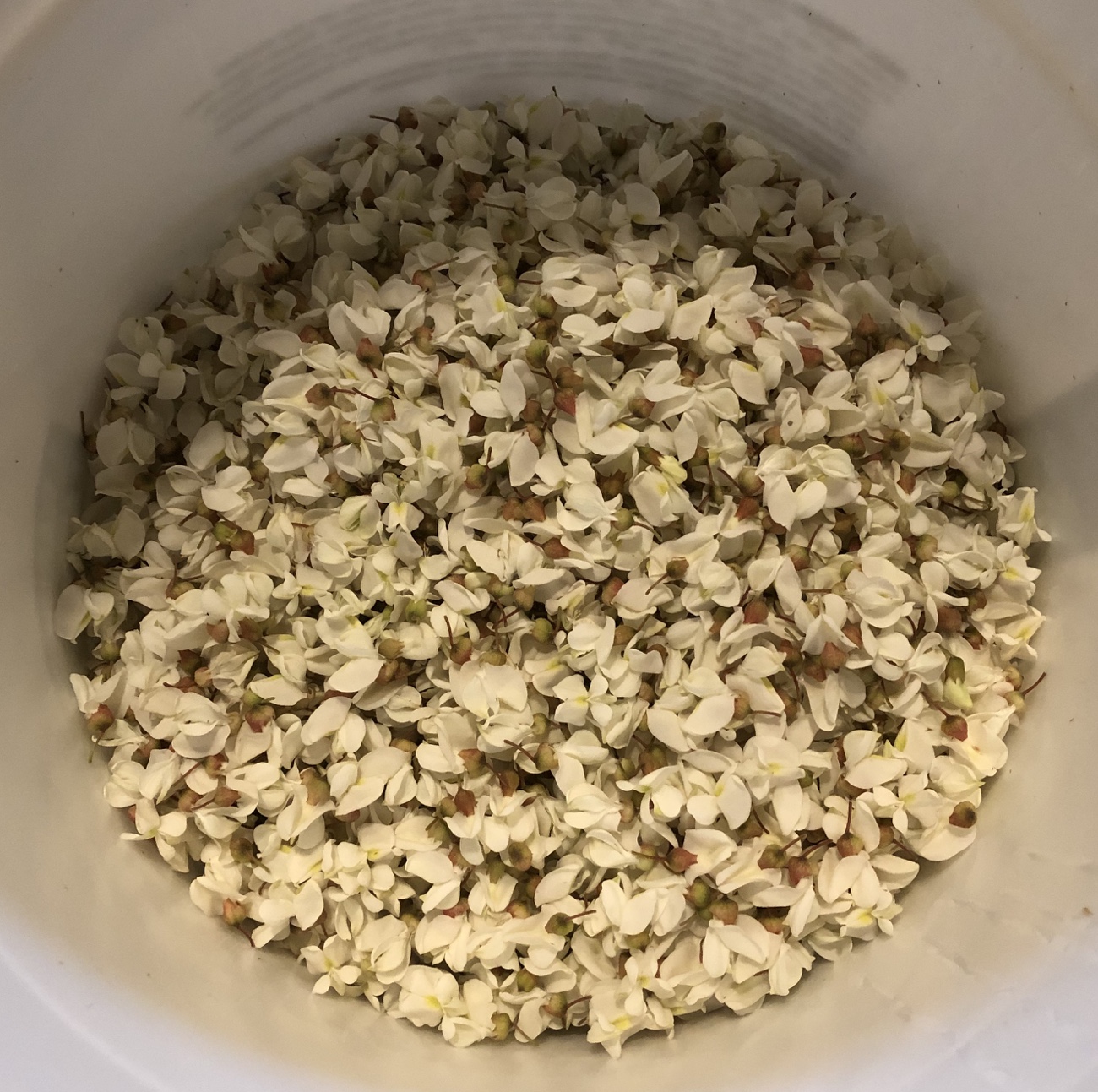
Next, the flowers are infused in hot water. I opted not to boil the flowers, partly because I didn’t have a pot large enough to accommodate them. Instead, I carefully poured the boiling water (to which I had added sliced oranges and lemons) over the flowers in the primary fermentor.

The flowers steeped for a couple of days, then the liquid was strained out. It still smelled delightfully floral!
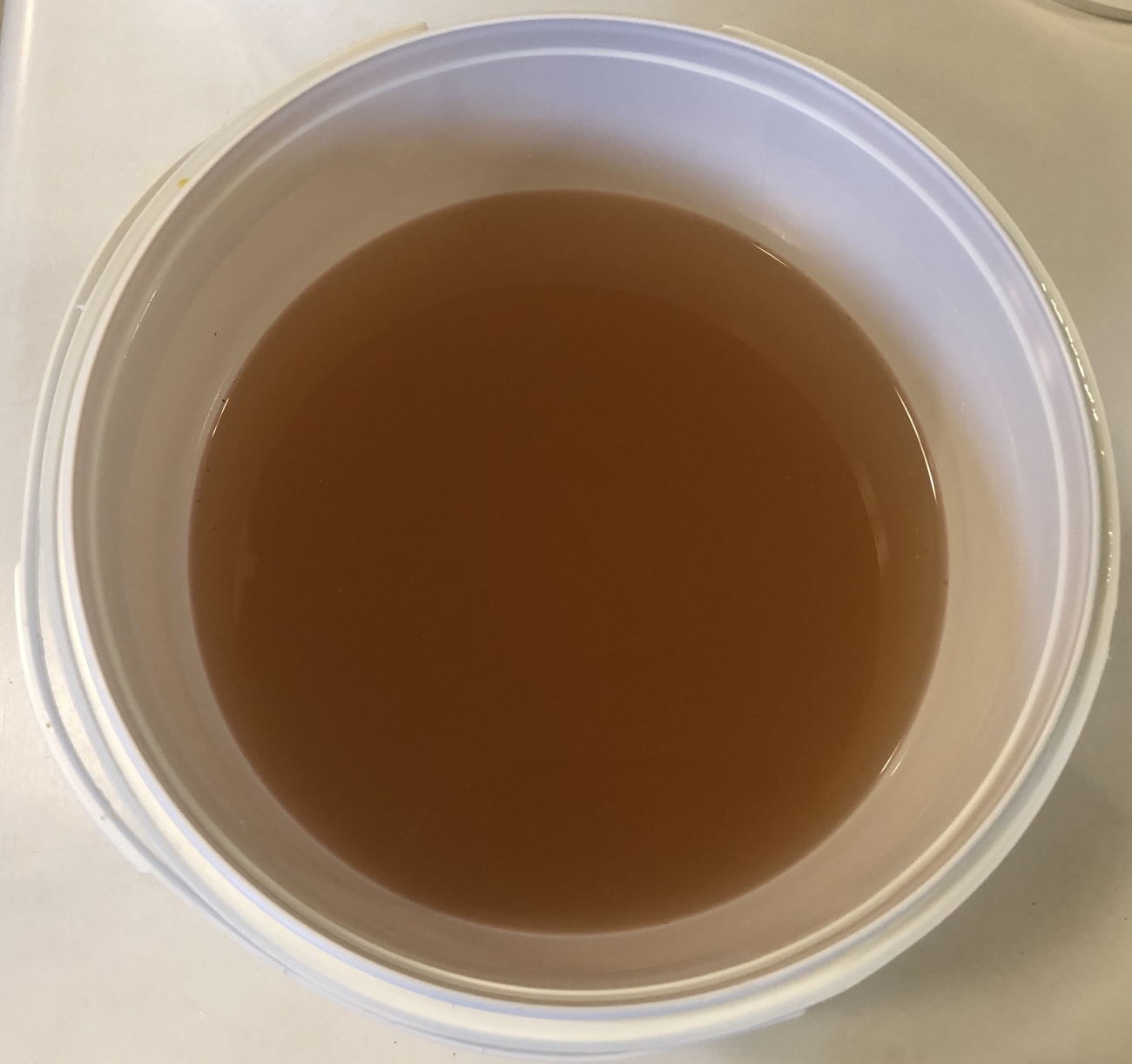
To the strained liquid, I added the sugar and yeast. I also added yeast nutrient to ensure that there would be an active ferment. The next morning, the must was bubbling away. A brisk stirring introduced some air, and the wine hissed happily from the confines of its fermentor.
The nascent wine will work its magic in the primary for a few more days, then I’ll move it to a carboy with airlock for the secondary ferment. I so hope it retains that floral/musk quality – it has the potential to be a very special wine.
Update: the wine has been in the secondary fermentor for several days now, burping into the airlock. When I moved it from the primary fermentor, it smelled nothing short of delicious. Can’t wait to sample this one!!
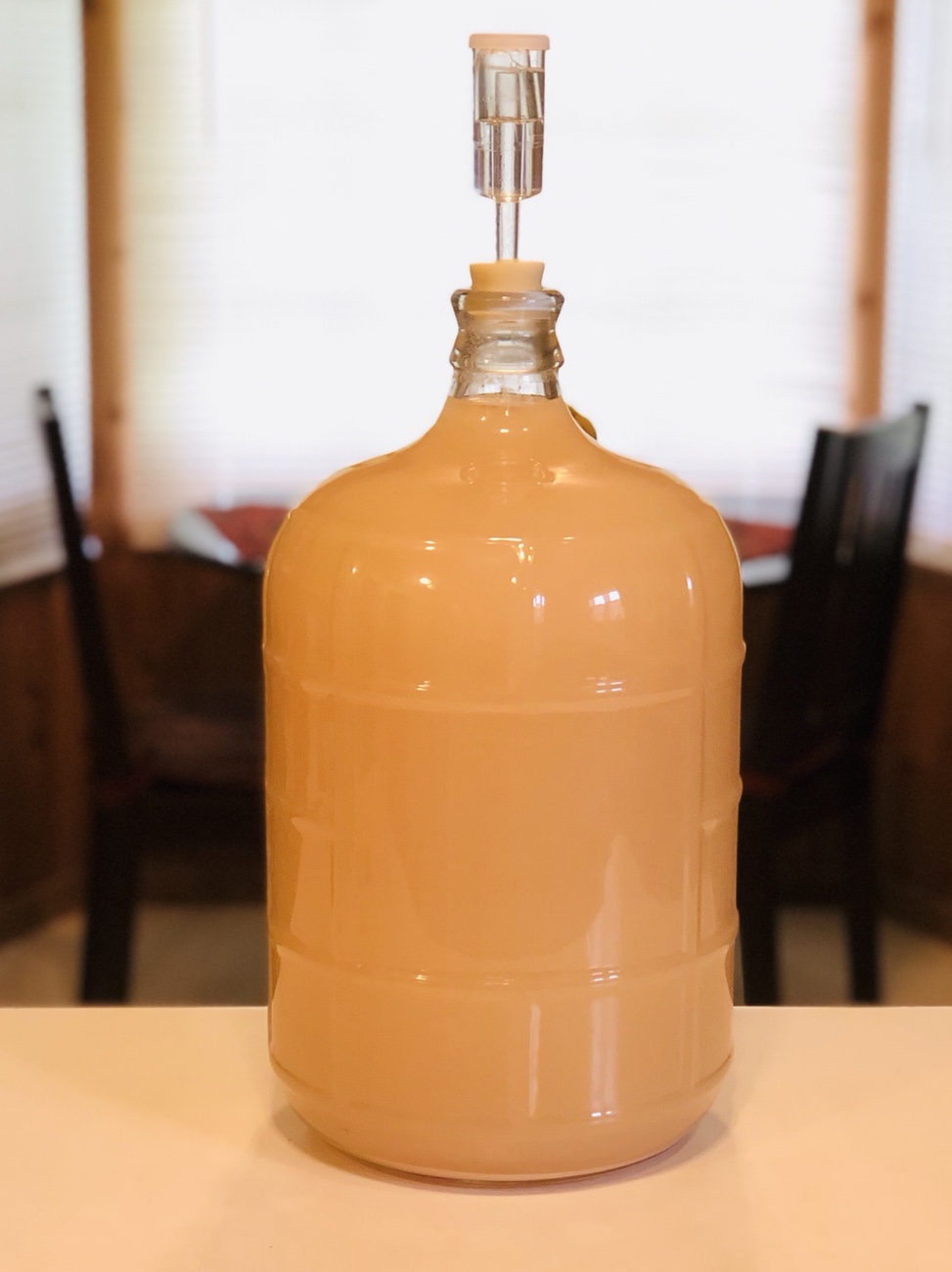
And, in the vein of no waste, guess who (greatly) enjoyed the spent blooms and citrus? The pasture pigs!

Comments are closed.